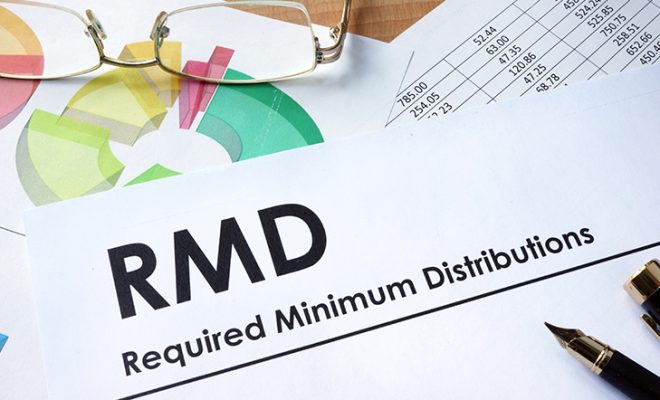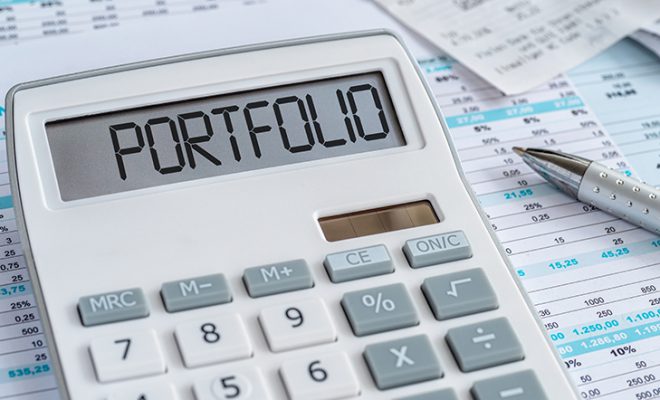Ten Retirement Investment Strategies You Need to Know
Many Americans spend their lives saving and planning for their golden years. But financial security in retirement does not happen at once. You need to put in years of planning, savings, and wise investments to ensure you can live a financially comfortable retired life. Alarmingly, only 40% of Americans have calculated how much they need to save for retirement. Further, as per the U.S. Census, the average income for 47.8 million Americans aged 65 and above is only $38,515. The average net worth of this age group is only $170,516. With numbers like this, retirement planning can be challenging.
Three-quarters of Americans agree that the country is facing a retirement crisis. With life expectancy figures indicating an increased retirement span of more than 20 years, it is critical that you save and invest diligently for retirement. Moreover, the steeply rising inflation needs to be factored in when planning for your retirement. Even though in recent years, inflation has been below the Fed’s benchmark of 2%, the trend is rare to find. The average inflation rate during 1913-2013 was 3.22%, which has a high potential of eroding your retirement corpus sooner than anticipated. Experts recommend planning for higher prices in the future and saving and investing accordingly for your retirement.
Retirement planning is an evolving process. To ensure you have a safe and comfortable retired life, you should consider all elements and build a financial cushion that can surpass all hurdles and fund a secure retirement. Only saving is not sufficient; you have to invest your savings wisely so that your money grows while you sleep. But the best investments for retirement for you depend on your risk tolerance and return expectations. Finding investments that fit your risk appetite and return expectations is vital to a successful retirement savings strategy. The best way to invest money for retirement is to consider your age. Younger people with a longer time horizon have a higher risk tolerance, and therefore are more likely to invest in stocks and stock funds instead of fixed income securities. Alternatively, older people close to retirement have a lower risk appetite, and are therefore more likely to invest in fixed securities like bonds than stocks. A mix of high-risk and low-risk securities, such as balancing stocks, fixed income securities, and alternative assets, can be a good strategy to invest money for retirement. The precise balance between these securities depends on your risk appetite. If you need help in coming up with the right securities mix for your investment portfolio that suits your risk tolerance levels, consult with a professional financial advisor who can suggest an optimal strategy for you to save for your retirement.
Here are some retirement investment strategies that can help you create an effective retirement portfolio:
1. Aim to create a total return portfolio: Given the low Social Security benefits and diminishing pension plans, your retirement expenses are majorly dependent on income from your investment portfolio. However, historically low yields on fixed-income securities can put pressure on your portfolio, prompting you to tilt towards higher-yielding assets, like stocks, which potentially compromise your original risk profile. Therefore, to minimize portfolio risks and increase portfolio longevity, it is advisable to use a total-return approach when investing. A total-return portfolio allows you to meet your spending goals through a combination of portfolio income and capital appreciation. This is a classic retirement investment strategy that can help you sustain your retirement expenses without relying entirely on your portfolio yield. Your asset allocation in a total return portfolio is driven by your risk-return profile comprising investments in diversified domestic and foreign fixed income and equity investments. The objective is to create a portfolio with investments in stocks, bonds, and cash, per your risk appetite. Alternatively, the withdrawal rate in a total return portfolio is predetermined, which is usually between 5-7% per year. And your total return portfolio must generate an average annual return, which is equal to or greater than your predetermined withdrawal rate. You can increase your withdrawals each year to account for inflation. In this case, your annual return is spread across a 10 to 20 year period, and you can timely rebalance your portfolio to match your risk and return per your life stage.
2. Balance your stock investments: Irrespective of your age and risk tolerance, financial experts recommend investing some of your retirement savings in stocks to benefit from the growth-oriented returns. Stock investments offer the highest potential returns on your money but can also expose you to the highest level of market risk. However, investing in stocks can bring a much-needed boost to your savings in the long run. You can invest in stocks to create a diversified portfolio. However, it is advisable to reduce your stock allocation with increasing age. An ideal retirement investment strategy is to subtract your age by 100 and accordingly plan your stock investments. For instance, if you are 40, you can allocate 60% in equity and the remainder in different market securities. However, if you are 55 years, then investing 45% in stocks and the remainder of your savings in other stable-return-producing investments may be a better approach.
3. Invest in bonds: Bonds are one of the safest retirement investment strategies. Especially, government and municipal bonds can assure income stability at low default risk, which is ideal for you during retirement. Financial experts recommend investing in bonds, irrespective of your risk tolerance and return expectations. However, the ratio of asset allocation in bonds can vary from one person to another. But, if invested wisely, bonds (particularly long-term bonds) have the potential to offer similar benefits as associated with high-risk asset classes like small-cap stocks. In 2011, the Vanguard Extended Duration Treasury ETF generated yields of 55% for investors, which is an exceptional performance. However, this does not imply that bonds are the best investments for retirement, and your complete portfolio should comprise bonds. Instead, since generally, bonds offer comparatively lower returns than stocks, mutual funds, etc., only the right mix of bonds with other securities can help you earn better income during retirement. A portfolio with 100% allocation in bonds is likely to hit your retirement corpus negatively and affect your long-term financial security.
4. Capitalize on retirement income funds (RIF): If you are looking for one of the safest investments for retirement, consider investing your savings in an RIF. An RIF is an investment product like a mutual fund, where your fund manager allocates your money across a diversified portfolio of large and mid-cap stocks and bonds. An RIF creates a perfect balance of stocks and bonds to generate moderate gains through a conservative investment approach. The objective of investing in a retirement income fund is to retain the portfolio while generating income for your retirement expenses. An RIF produces steady returns, which are higher than other conservative investments like Cash Deposits (CDs). An RIF is also highly liquid and can be used as an emergency fund. A major reason for including RIFs in your retirement portfolio is that the consistent dividends from the fund balance the risk of loss from market downturns. Further, you can schedule the payouts from your RIF – monthly or quarterly – according to your retirement income needs. However, like other mutual funds, even RIFs are subject to market risk and do not guarantee retirement income. These funds levy a fee similar to other mutual funds and also specify minimum investment requirements. But unlike mutual funds, RIFs do not enjoy any special tax treatment.
5. Choose immediate annuities: Immediate annuities, also known as a single-premium immediate annuity, is a contract between you and an insurance company, where the insurer promises to pay you a specific sum according to a pre-agreed frequency. In an immediate annuity, you pay a lump sum to the insurance company, in return for which the insurer guarantees to pay you a fixed sum of money, per your desired frequency – monthly, quarterly, monthly, or annually. These annuities are considered one of the best investments for retirement, especially if you are a low-risk investor and desire a steady retirement income. Immediate annuities start paying out a regular income at the defined frequency immediately after purchase. This annuity investment is different from a deferred annuity, which provides income at a future date after purchase. You can use an immediate annuity if Social Security benefits are insufficient to fund your retirement expenses. Immediate annuities serve as a great source of secondary income during the non-working years of your life. You can also trim your cash flow per your desire. If you do not want lifelong income flow, you can choose to receive payouts for a specific period, such as five to ten years. Immediate annuities also come in different types. To hedge against the steeply rising inflation, you can consider investing in an inflation-protected/indexed annuity, which protects your investment while increasing it as per future inflation rates. Apart from offering stable retirement income, immediate annuities reduce the risk of outliving your retirement savings. Further, you also defer taxes until later years in retirement, when you are likely to be in a lower tax bracket. The payouts of immediate annuities are considerably higher than CDs, and these annuities provide utmost flexibility in terms of tenure and payouts, providing financial independence even in retirement. However, on the downside, the benefit of an immediate annuity expires in the unfortunate case of your death. Further, immediate annuities are irreversible and not a liquid investment. Even in times of emergency, you cannot access the principal amount paid.
6. Pick variable annuities with a lifetime income rider: Another safe way to invest money for retirement is to pick a variable annuity, preferably one with a lifetime income rider. A variable annuity with a lifetime income rider will add much-needed stability to your retirement portfolio while generating a reliable income source. In a variable annuity, you can invest money in securities of your choice and then get an income in retirement as per the performance of the chosen investments. While variable annuities allow you to earn high returns like equity investments, they also expose your retirement portfolio to market volatility. Hence, you can consider choosing a variable annuity with a lifetime income rider. This rider will come at an additional cost but will offer a guaranteed and growing benefit base for your lifetime. Variable annuities do not pay out an immediate income. So, if you want to start receiving funds immediately, then variable annuities might not be the best way to invest money for retirement.
7. Invest in rental real estate: Most often, when you ask someone what is the best investment for retirement, the general reply is a balance of stocks, bonds, and other money market instruments. However, times are different now. Given the steeply rising inflation, low-interest rates, and longer retirement period, it is advisable for you to think beyond the ordinary retirement investment strategies. In this regard, alternative asset investments can bring the perfect blend of risk and return to your retirement portfolio. Alternative assets like rental real estate can allow you to diversify your retirement portfolio and generate inflation-secure returns. Renting out real estate can provide a stable income source for the non-working years. However, you should consider investing in real estate only if you have strong knowledge of the market and can actively manage the property and renting process. This type of investment is more suitable if you have a background in real estate. Further, rental real estate will involve huge investments and several recurring costs, such as maintenance, repairs, property taxes, etc. The property is also subject to damage and losses, which can negatively impact your rental income.
8. Consider real estate investment trusts (REITs): Another alternative asset investment you can include in your retirement portfolio is a REIT. REITs are a low-risk investment option if you do not have sufficient funds or knowledge to manage a rental real estate property. REITs are companies that own or mortgage commercial real estate, including shopping malls, apartments, warehouses, retail centers, etc., to generate a fixed income stream. Typically, REITs function like mutual funds. You invest your capital, and REITs further allocate these funds in commercial real estate. These companies manage everything from end to end, including buying the property, renting it out, collecting rent, etc., to create a reliable income stream. You do not have to own or manage any real estate. Hence, there is low risk and the potential to earn a high income. You can invest in a REIT through an exchange-traded fund (ETF) or mutual fund. REITs help to diversify your retirement portfolio and generate potentially higher total returns at low risk. Further, REITs have a low correlation with other market securities like stocks, bonds, etc., making them one of the best investments for retirement.
9. Choose dividend income funds: Among all other retirement investment strategies, it is advisable to pay some attention to dividend income funds. You can include dividend income funds in your retirement portfolio rather than directly investing in dividend-paying stocks. In dividend income funds, professional fund managers own and manage dividend-paying stocks on your behalf in return for a fee. The benefit of investing in dividend income funds is that these securities give you a steady retirement income yet allow you to benefit from the rise in the value of shares. Moreover, if the company you invest in performs well in a financial year, you can potentially expect much higher dividend payouts. However, in bad times, dividends can be too low or stopped altogether.
10. Keep some safe investments: To create an optimally diversified retirement portfolio, it can help to balance stocks and bonds with other more liquid and safe securities. The objective of adding some liquidity to your retirement portfolio is to ensure you have ready access to funds in an emergency. The best investment for retirement for liquidity purposes is a certificate of deposits (CDs). A CD is a federally insured account that offers a fixed rate of interest over a specific period. CDs are issued by credible financial institutions, such as banks and credit unions, and help you preserve an optimum level of liquidity in your retirement portfolio. CDs offer much lower returns than stocks and bonds, but their non-volatile, guaranteed earnings can give you assured financial security during retirement. CDs can also cover emergency expenses, like medical bills, during retirement. You can invest in CDs with different tenures – one, three, and five years, according to your requirements.
To conclude
Choosing sound retirement investment strategies can seem like a daunting task, especially if you are just starting your retirement planning journey. However, even if you are a seasoned retirement planner, you will require intense analysis to determine the best strategy that adequately fits your risk and return expectations. It can be pressurizing to plan for the unknown, ascertain exactly how much you will need to live your golden years comfortably and pick the best investments for retirement. To navigate these challenges in your retirement planning, you can consider engaging with a professional financial advisor who can assess your financial objective, risk tolerance, retirement expectations, and more and accordingly help you create a portfolio to meet your goals.
Find experienced and certified financial fiduciaries suited to your financial requirements. Our free advisor match tool connects you with 1-3 financial advisors that may be able to help you with your financial goals and needs.











